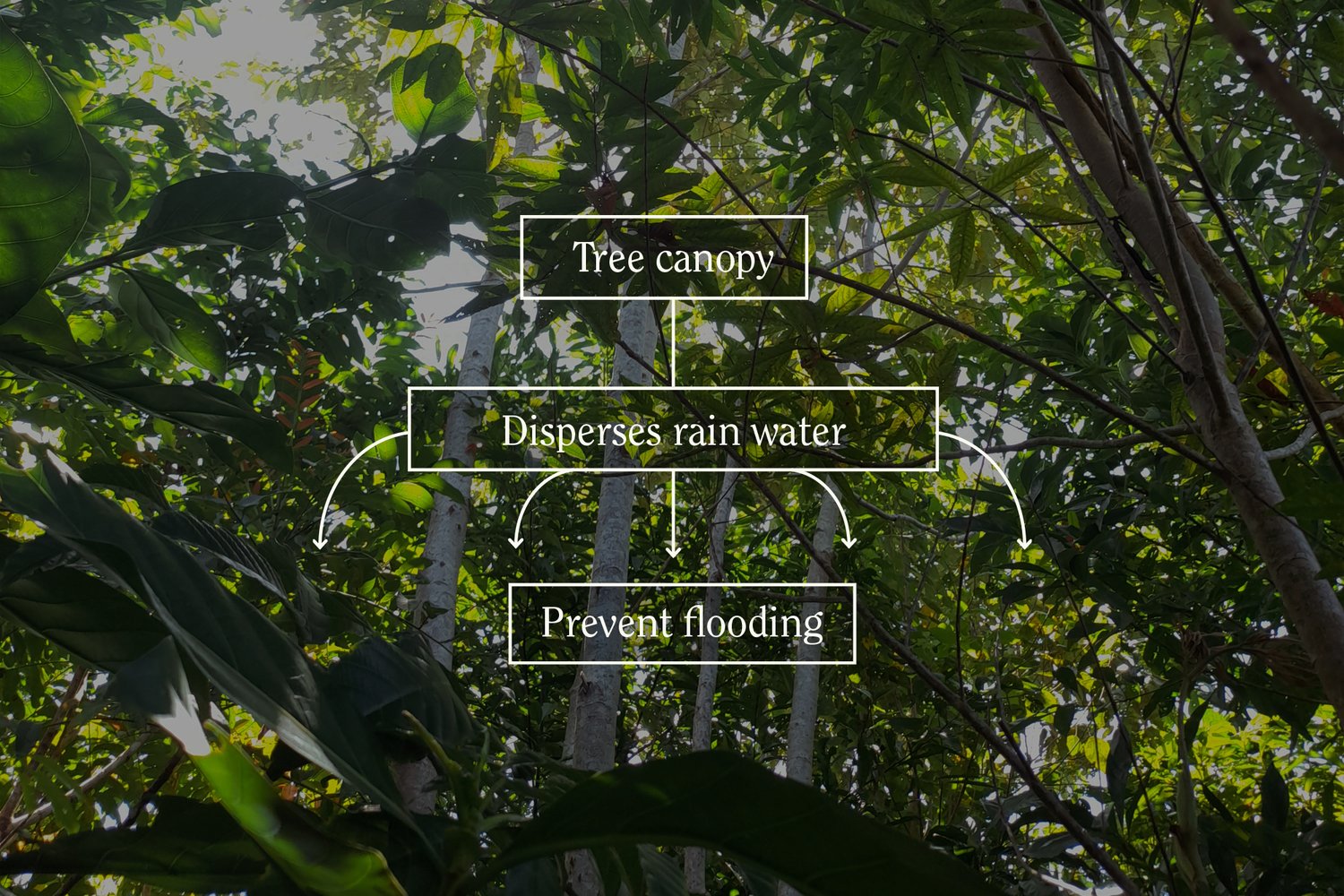
Insight
Pocket Forests prevent floods
Pocket forests help prevent flooding by reducing the flow of rainwater. Where there is a lack of tree cover, rain hits the ground at a higher speed. Miyawaki forests are 30 x denser than your conventional forest, and a substantial mix of leaves, branches and trunks, can intercept a downpour and spread the effect of a rainstorm over a more extended period.
Once caught in the canopy, a significant percentage of rainfall evaporates without touching the ground.

SUGi Pocket Forests planted using the Miyawaki Method are made up of multiple layers of varying heights. This mixture of shrub, sub-tree, tree and canopy tree creates a green wall that slows down the force of destructive flooding.
Unlike impervious surfaces, such as concrete and asphalt, a permeable forest floor can drain rainfall and stop runoff. The density of a Miyawaki forest results in a large build-up of fallen leaves. This decomposing leaf matter forms an organic layer of humus-rich soil that allows water to permeate into the earth like a sponge. The roots soak up the rainfall and wind deep into the ground, creating spaces between the soil particles, reducing compaction and creating even more room for drainage.

We can use these forests to reduce the energy of extreme weather events like tsunamis and hurricanes. Deep roots prevent the trees from falling over, and the blockade of branches prevents drifting debris such as cars from being washed away by the undertow.

“We must plant Miyawaki forests 4-10m wide, between the river and surrounding infrastructure to reduce the energy of the flood and save lives. It’s not a hippy lullaby. It’s cheap and effective. Windows were shattered, people got hurt, some lost everything, some disappeared. How come we don’t get it.”
— Nicolas de Brabandère, SUGi Forest Maker




